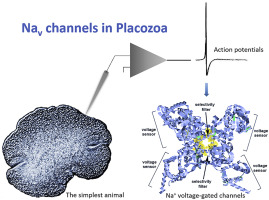Simple nervous system
-
Contribution of histone acetylation to the serotonin-mediated long-term synaptic plasticity in terrestrial snails
Serotonin plays a decisive role in long-term synaptic plasticity and long-term memory in mollusks. Previously, we demonstrated that histone acetylation is a regulatory mechanism of long-term memory in terrestrial snail. At the behavioral level, many studies were done in Helix to elucidate the role of histone acetylation and serotonin. However, the impact of histone acetylation on long-term potentiation of synaptic efficiency in electrophysiological studies in Helix has been studied only in one paper. Here we investigated effects of serotonin, histone deacetylases inhibitors sodium butyrate and trichostatin A, and a serotonergic receptor inhibitor methiothepin on long-term potentiation of synaptic responses in vitro. We demonstrated that methiothepin drastically declined the EPSPs amplitudes when long-term potentiation was induced, while co-application either of histone deacetylase inhibitors sodium butyrate or trichostatin A with methiothepin prevented the weakening of potentiation. We showed that single serotonin application in combination with histone deacetylase blockade could mimic the effect of repeated serotonin applications and be enough for sustained long-lasting synaptic changes. The data obtained demonstrated that histone deacetylases blockade ameliorated deficits in synaptic plasticity induced by different paradigms (methiothepin treatment, the weak training protocol with single application of serotonin), suggesting that histone acetylation contributes to the serotonin-mediated synaptic plasticity.
-
Sodium action potentials in placozoa: Insights into behavioral integration and evolution of nerveless animals

Placozoa are small disc-shaped animals, representing the simplest known, possibly ancestral, organization of free-living animals. With only six morphological distinct cell types, without any recognized neurons or muscle, placozoans exhibit fast effector reactions and complex behaviors. However, little is known about electrogenic mechanisms in these animals. Here, we showed the presence of rapid action potentials in four species of placozoans (Trichoplax adhaerens [H1 haplotype], Trichoplax sp.[H2], Hoilungia hongkongensis [H13], and Hoilungia sp. [H4]). These action potentials are sodium-dependent and can be inducible. The molecular analysis suggests the presence of 5–7 different types of voltage-gated sodium channels, which showed substantial evolutionary radiation compared to many other metazoans. Such unexpected diversity of sodium channels in early-branched metazoan lineages reflect both duplication events and parallel evolution of unique behavioral integration in these nerveless animals